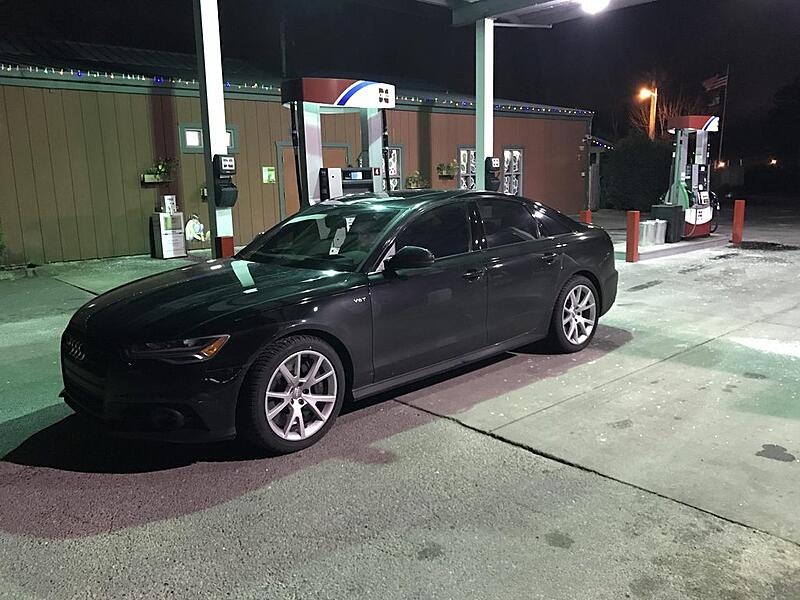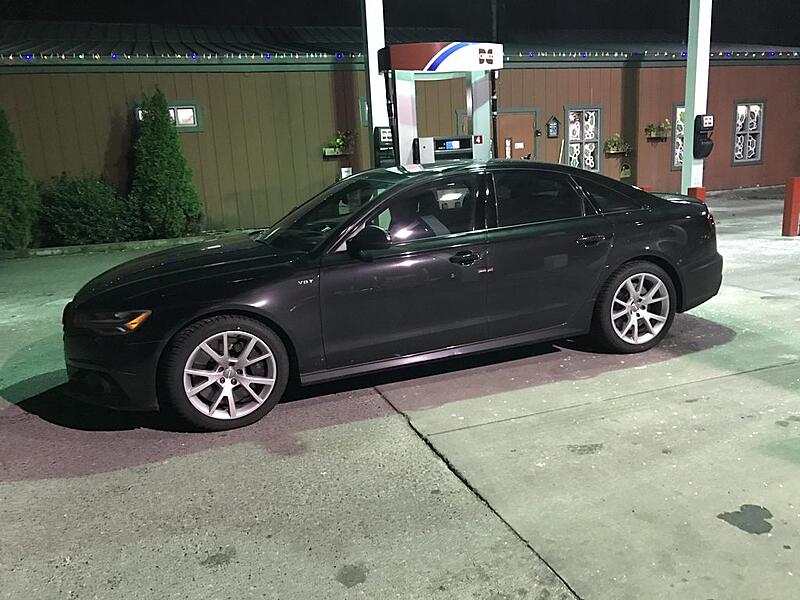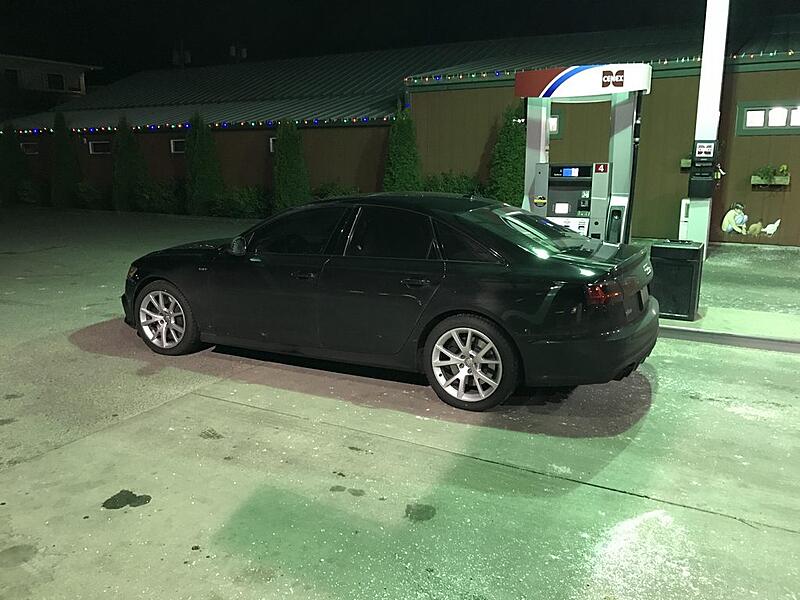Winter Setup Help!
#22
I agree with you that if your driving through 5 inches of snow, that a higher sidewall and a narrower tire, is with out question the best choice. I simply want to point out don't go overkill on a winter tire choice. Today in Massachusetts it was 62 Degrees, and it still has not snowed yet. But it's been under 40 degrees a lot, and we've had wet & dry roads etc. I just think that you should make sure you have the right rubber compound tire, but I think you should think to yourself... "How much do I actually drive through accumulating snow?"
#24
AudiWorld Newcomer
Join Date: Aug 2016
Location: Southern Ontario
Posts: 2
Likes: 0
Received 0 Likes
on
0 Posts
#25
I don't buy that. Your response suggests that a much narrower tire, say one inch wide, would be best. Wider tires have the most gripping surface, especially with the new hydrophilic rubber compounds. Sinking in the snow offers no advantage.
#26
AudiWorld Member
Join Date: Feb 2016
Location: Boston, MA
Posts: 425
Likes: 0
Received 0 Likes
on
0 Posts
I believe why a lot of experts kind of adopt a line of: "generally speaking, Narrower is better, and smaller diameter is better (Higher sidewall)"
Is exactly what I was talking about earlier in the thread. That enthusiasts generally would like to preserve as much of the handling & control even in the winter. The research shows that a vehicle that normally is fitted with Summer 285's performs better in accumulating snow conditions when a narrower winter compound tire is used, as the owner my be tempted to fit the same width tire. So I think the general rule of thumb would be like drop down a size or two.
Btw it's possible that a 100mm tire might actually perform better in accumulating snow,(I'm not sure of the research) but only in that one respect, and that was always my larger point, you can't ignore that you drive in other, more normal cold conditions.
#27
AudiWorld Senior Member
With all else being equal, the total footprint created by a tire depends upon tire pressure and the weight on that particular corner (a tire is, essentially, an imperfect balloon). What changes with a wide vs. narrow tire is the shape of that footprint - with the former being wide and short, while the latter is narrow and long. There is pretty much no change in the total footprint, so tire width has little bearing on how much of the high-tech tire tread is available for grip.
So, what's better for most* snowy conditions? A narrow and long footprint, since it is better able to cut through the snowpack and find purchase on the pavement (or underlying hardpack). Just look at what professional rally teams use in winter - it's almost always an extremely narrow tire.
* If you're driving on several feet of loose or crusty snowpack, with no hope of touching bottom, you're best off using balloon tires and trying to "float" above it all (see one of the early seasons of Top Gear, where they took a modified Toyota truck to the Arctic).
So, what's better for most* snowy conditions? A narrow and long footprint, since it is better able to cut through the snowpack and find purchase on the pavement (or underlying hardpack). Just look at what professional rally teams use in winter - it's almost always an extremely narrow tire.
* If you're driving on several feet of loose or crusty snowpack, with no hope of touching bottom, you're best off using balloon tires and trying to "float" above it all (see one of the early seasons of Top Gear, where they took a modified Toyota truck to the Arctic).
Last edited by DeerHunter; 12-11-2016 at 07:07 PM.
#29
Think of it slightly differently.....
Let's say that the car has a mass of 4000 pounds. To keep the math simple let's assume the car is perfectly balanced. So 4000 pounds divided by 4 tires = 1000 pounds per tire. If the contact area of your summers tires is 10 square inches then the force per square inch is 100 pounds. Given we want the highest possible (within reason!) force per square inch for our winter tires, then if we reduce the contact area to 5 square inches (not exactly practical) the nwe have increased the available force to grip the slippery surface.
In the engineering world it is commonly referred to as "force per unit area". For snow and ice you want to increase the force per unit area of you tires. The easiest way to do that is to use a narrower tire.
Let's say that the car has a mass of 4000 pounds. To keep the math simple let's assume the car is perfectly balanced. So 4000 pounds divided by 4 tires = 1000 pounds per tire. If the contact area of your summers tires is 10 square inches then the force per square inch is 100 pounds. Given we want the highest possible (within reason!) force per square inch for our winter tires, then if we reduce the contact area to 5 square inches (not exactly practical) the nwe have increased the available force to grip the slippery surface.
In the engineering world it is commonly referred to as "force per unit area". For snow and ice you want to increase the force per unit area of you tires. The easiest way to do that is to use a narrower tire.
#30
AudiWorld Senior Member
Think of it slightly differently.....
Let's say that the car has a mass of 4000 pounds. To keep the math simple let's assume the car is perfectly balanced. So 4000 pounds divided by 4 tires = 1000 pounds per tire. If the contact area of your summers tires is 10 square inches then the force per square inch is 100 pounds. Given we want the highest possible (within reason!) force per square inch for our winter tires, then if we reduce the contact area to 5 square inches (not exactly practical) the nwe have increased the available force to grip the slippery surface.
In the engineering world it is commonly referred to as "force per unit area". For snow and ice you want to increase the force per unit area of you tires. The easiest way to do that is to use a narrower tire.
Let's say that the car has a mass of 4000 pounds. To keep the math simple let's assume the car is perfectly balanced. So 4000 pounds divided by 4 tires = 1000 pounds per tire. If the contact area of your summers tires is 10 square inches then the force per square inch is 100 pounds. Given we want the highest possible (within reason!) force per square inch for our winter tires, then if we reduce the contact area to 5 square inches (not exactly practical) the nwe have increased the available force to grip the slippery surface.
In the engineering world it is commonly referred to as "force per unit area". For snow and ice you want to increase the force per unit area of you tires. The easiest way to do that is to use a narrower tire.




